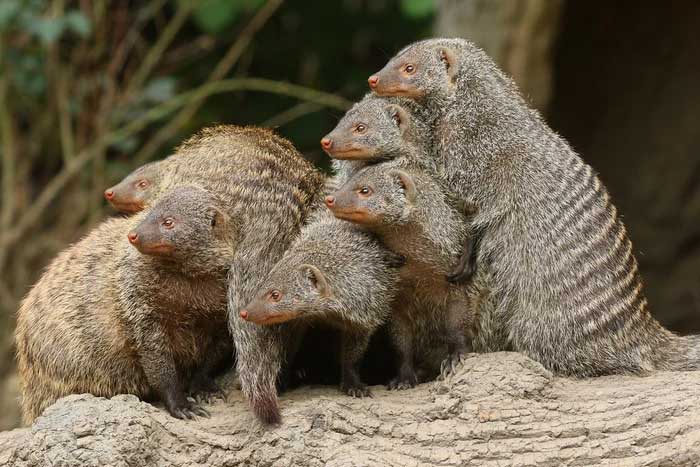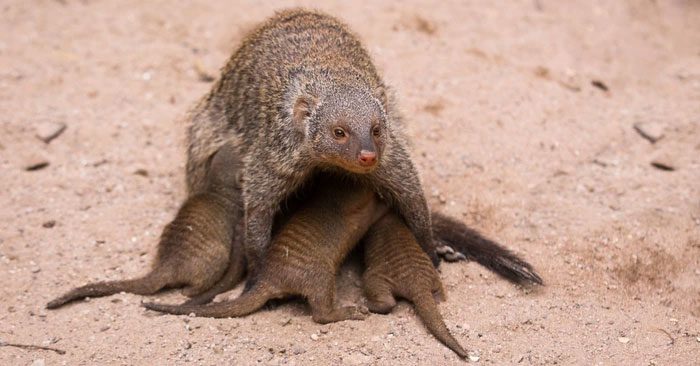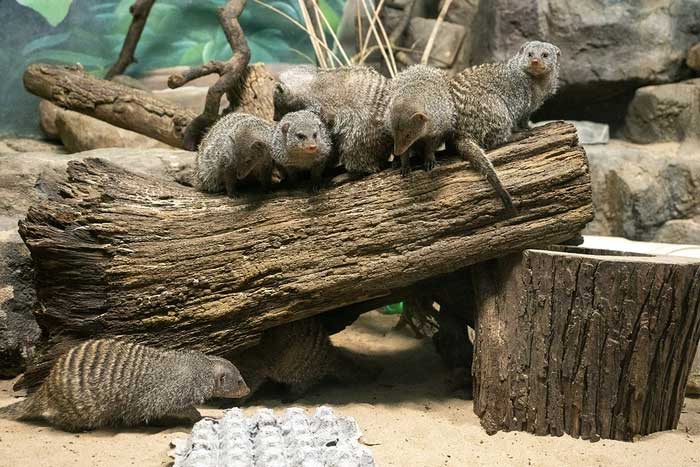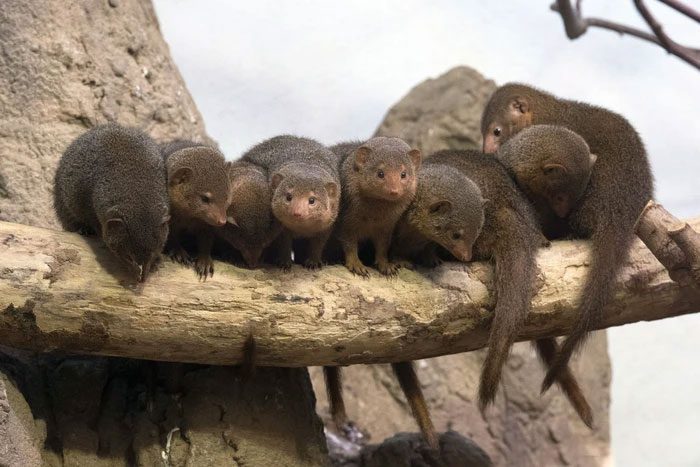Most species of meerkats have long, flat heads that taper to a point at the nose, short ears, and rounded ear rims. According to a new study published in the journal Nature, mother meerkats cannot distinguish their own pups from those of other females in the group, so all the young in the group receive equal care and food. This inadvertently creates a more equitable society within the meerkat colony.
Researchers from the universities of Exeter and Roehampton found that because female meerkats in a group give birth on the same night, they are unable to identify which pups belong to which mother, as reported by Psych News Daily.
The research team regularly provided extra food to half of the pregnant females in a meerkat group, intentionally creating increased inequality in the birth weights of their pups.

Meerkats have a body length ranging from 30cm to 100cm depending on the individual, with a weight ranging from 1 to 14kg.
However, after giving birth, mothers that received more food quickly mitigated this inequality by redistributing food to any hungry pups. They tended to care more for the smaller pups born to undernourished females, which caused the size differences among the pups to rapidly diminish.
Co-author Harry Marshall from Roehampton University stated: “In the natural world, most species prioritize their own offspring. But meerkats are different. In this species’ society, synchronized birthing – where all pregnant females give birth on the same night, likely to protect the pups from predators – has led to an ‘unusual situation’ where all females cannot identify their own young and thus cannot choose a priority.”
“Our research shows that this ignorance leads to a more equitable resource allocation – in effect, a fairer society,” Marshall said.

The fur color of meerkats is quite similar to that of domestic cats, predominantly featuring dark colors such as brown and gray. In some species like the yellow meerkat, their bodies are mostly covered with a distinctive golden-brown fur. Most species have stripes, spots, or bands on their bodies. They have long, flat heads that taper to a point at the nose, short ears, and rounded ear rims. Their eyes are of medium size and are often surrounded by a black patch.

The fighting weapon of this species of meerkat is its long, sharp claws combined with a strong jaw, along with their quick wits and agility, making them a formidable opponent. They have often been dubbed as the battle brothers of the honey badger, as their hunting mechanisms and carefree attitude make the two species remarkably similar.

Meerkats possess a resistance mechanism to venom similar to that of honey badgers, which allows them to hunt venomous snakes in Africa. In addition to having an immune system that can withstand venom, their approach and method of subduing prey are also very clever and refined. With their sharp teeth and the ability to “hypnotize” their prey with their eyes, their target becomes immobilized for a brief moment, during which they quickly strike at the snake’s midsection, converting it into a delicious meal.

If honey badgers can faint when bitten by poisonous snakes, meerkats only need a brief rest to restore their health quickly. The operational mechanism of this species is not fixed, as their hunting can take place both day and night. They are quite diligent in searching for food, with peak hunting times occurring from dusk until midnight.
|
Meerkats are small terrestrial carnivorous mammals belonging to the family Herpestidae. This family is currently divided into two subfamilies, Herpestinae and Mungotinae. Herpestinae includes 23 species native to Southern Europe, Africa, and Asia, while Mungotinae comprises 11 species native to Africa. When frightened, these animals will growl and release a scent from their anal glands. They can also scream when they feel uncomfortable, but some subspecies often express their moods through tail movements, similar to dogs. |


















































